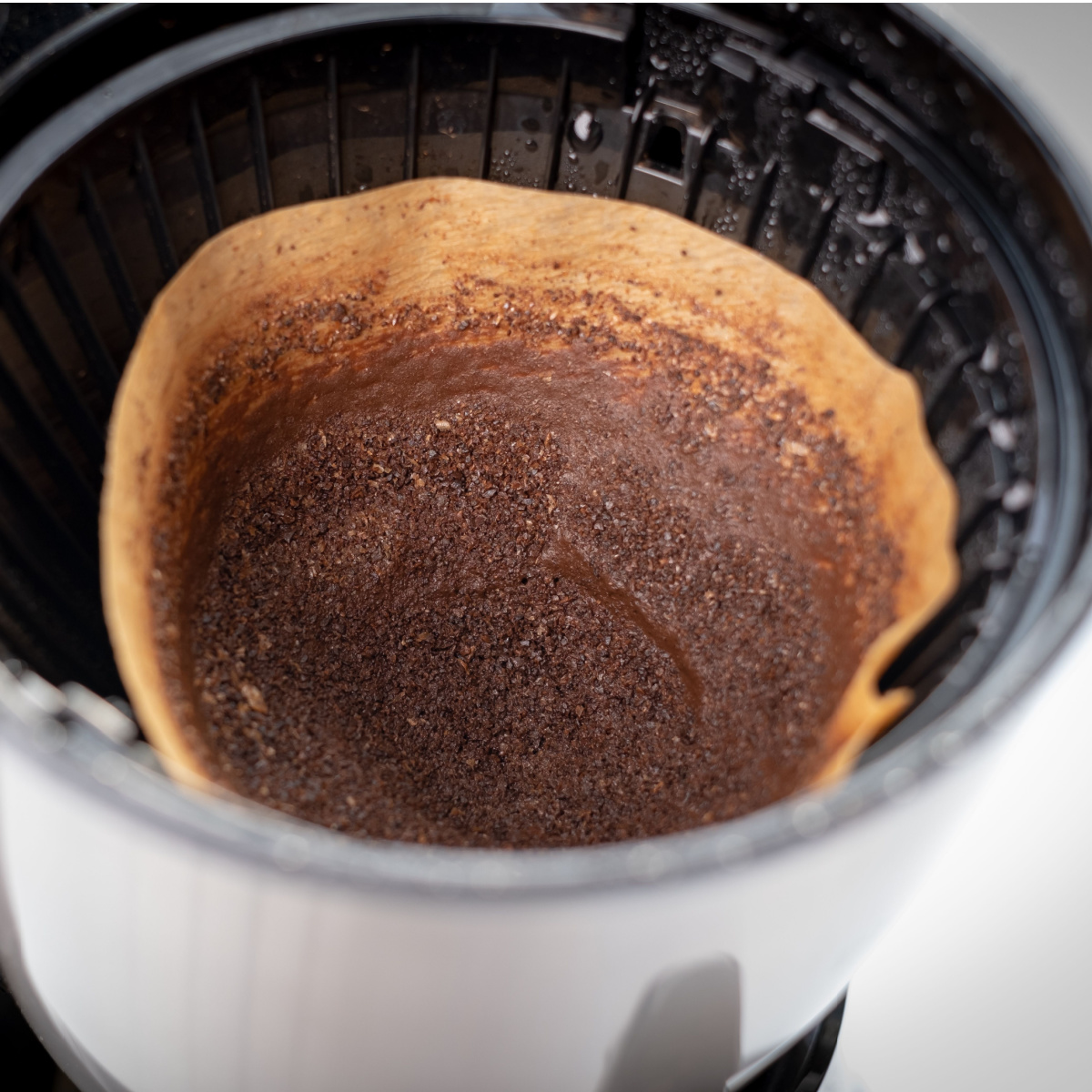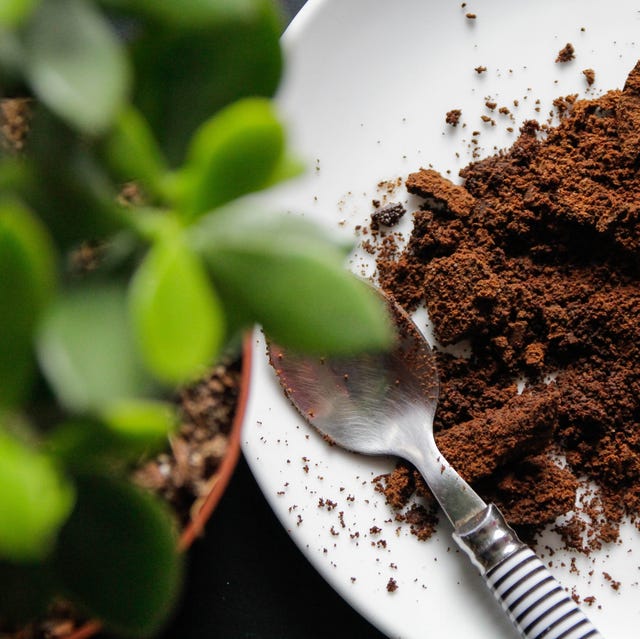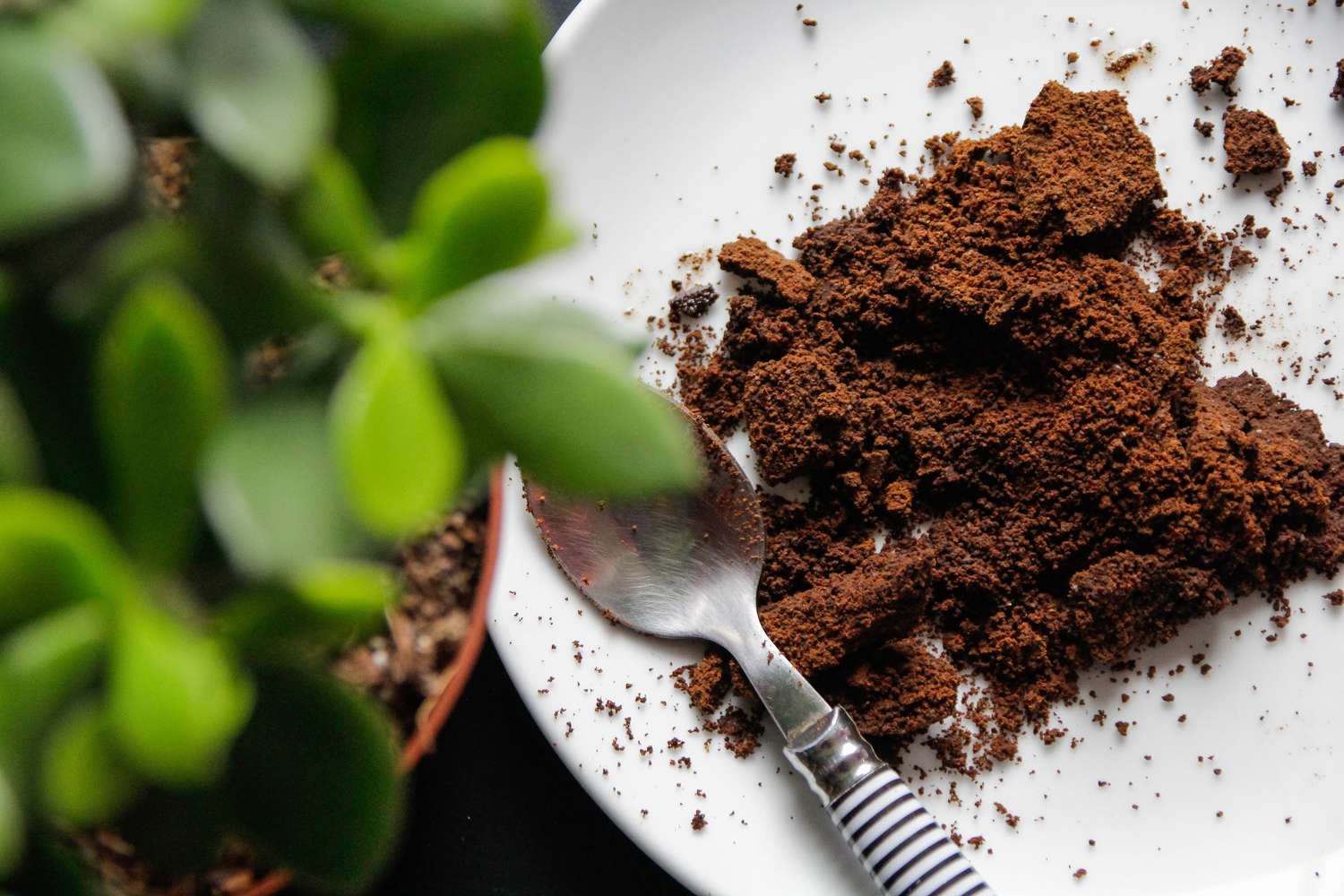Use coffee grounds in house plants as a fertilizer when the soil needs a nitrogen boost. Ensure the grounds are used sparingly to avoid over-acidity.
Coffee grounds can be a fantastic addition to your houseplant care routine. They are rich in nitrogen, which is essential for healthy plant growth. Using coffee grounds helps improve soil structure and enhances water retention. This organic matter also attracts beneficial microorganisms that aid in breaking down nutrients.
Always use coffee grounds in moderation, as excessive use can lead to soil acidity. Mix them with other compost materials to balance the pH levels. Fresh coffee grounds are too acidic, so opt for used grounds instead. By integrating coffee grounds properly, you can enjoy healthier, more vibrant houseplants.

Credit: thisismygarden.com
Benefits Of Coffee Grounds
Using coffee grounds in house plants can bring many benefits. They provide essential nutrients and can help control pests. Below, we will explore these advantages in detail.
Nutrient Boost
Coffee grounds are rich in essential nutrients. These nutrients include nitrogen, phosphorus, and potassium. Plants need these nutrients to grow well. Coffee grounds also add organic matter to the soil. This helps improve soil structure and water retention.
Here’s a quick breakdown of the nutrients found in coffee grounds:
| Nutrient | Benefit |
|---|---|
| Nitrogen | Promotes healthy leaf growth |
| Phosphorus | Encourages root development |
| Potassium | Improves overall plant health |
Sprinkle a thin layer of coffee grounds on the soil. This will provide your plants with a steady nutrient boost.
Pest Control
Coffee grounds can help keep pests away. The smell of coffee repels many insects. Ants, snails, and slugs do not like coffee grounds. This makes your plants safer from these pests.
Follow these steps to use coffee grounds for pest control:
- Dry the coffee grounds completely.
- Sprinkle them around the base of your plants.
- Reapply as needed to keep pests away.
Using coffee grounds as a barrier can be very effective. They create a natural, chemical-free way to protect your plants.
For best results, use fresh coffee grounds. Avoid using flavored or sweetened coffee grounds. They can attract pests instead of repelling them.
Suitable House Plants
Using coffee grounds in house plants can be beneficial. They offer nutrients and improve soil structure. But not all house plants love coffee grounds. Here are some suitable house plants for coffee grounds.
Acid-loving Plants
Some house plants thrive in acidic soil. Coffee grounds can help in such cases. Below are some popular acid-loving house plants:
- Jade Plant: Coffee grounds support its growth.
- Christmas Cactus: Loves slightly acidic soil.
- African Violets: They bloom better with coffee grounds.
General House Plants
Many house plants can benefit from coffee grounds, even if they don’t specifically need acidic soil. Here are some general house plants that can thrive:
- Spider Plant: They grow faster with coffee grounds.
- Pothos: Coffee grounds provide essential nutrients.
- Snake Plant: It becomes more vibrant with coffee grounds.
How To Prepare Coffee Grounds
Properly preparing coffee grounds is essential for using them in house plants. This process ensures your plants receive the maximum benefits. Let’s dive into the steps for drying and storing coffee grounds.
Drying Process
Drying coffee grounds is a crucial step. Wet grounds can mold and harm your plants. Follow these simple steps to dry your coffee grounds:
- Spread used coffee grounds on a baking sheet.
- Place the sheet in a warm, dry area.
- Stir the grounds daily to ensure even drying.
- Allow them to dry for 2-3 days.
Storage Tips
Proper storage keeps your coffee grounds fresh and mold-free. Here are some useful tips:
- Store dried coffee grounds in an airtight container.
- Keep the container in a cool, dry place.
- Label the container with the drying date.
- Use within two weeks for best results.
Following these steps ensures your coffee grounds stay fresh and beneficial for house plants.
How To Apply Coffee Grounds
Understanding how to properly apply coffee grounds to house plants is crucial. Doing it the right way can enhance plant health and growth. Here are some effective methods to use coffee grounds in your house plants.
Top Dressing
Applying coffee grounds as a top dressing is simple. Sprinkle a thin layer over the soil. Make sure the layer is not too thick. Thick layers can trap moisture and lead to mold.
- Step 1: Dry the coffee grounds completely.
- Step 2: Spread a thin layer on top of the soil.
- Step 3: Gently mix the grounds into the top inch of soil.
Repeat this process monthly for best results. Avoid over-applying to prevent soil imbalance.
Composting
Composting coffee grounds is another effective method. This enriches the compost and provides nutrients to plants. Follow these steps to compost coffee grounds:
- Step 1: Collect used coffee grounds in a container.
- Step 2: Mix coffee grounds with other compost materials.
- Step 3: Maintain a balance of green and brown materials.
- Step 4: Turn the compost pile regularly.
Composting coffee grounds adds nitrogen to the compost. This helps in creating nutrient-rich soil for your plants.
| Materials | Category | Ratio |
|---|---|---|
| Coffee Grounds | Green | 1 part |
| Dry Leaves | Brown | 3 parts |
| Vegetable Peels | Green | 1 part |
| Wood Chips | Brown | 3 parts |
Ensure the compost pile remains moist but not waterlogged. This creates the ideal environment for decomposition.
Dos And Don’ts
Using coffee grounds in house plants can be beneficial if done right. They can add nutrients, improve soil structure, and even deter pests. However, it’s essential to follow some dos and don’ts to avoid harming your plants.
Proper Amounts
Adding the right amount of coffee grounds is crucial for plant health. Too much can create problems.
- Start small: Use a thin layer, about 1/2 inch, on the soil surface.
- Mix well: Blend grounds with the soil to avoid clumping.
- Frequency: Apply once a month to prevent over-fertilization.
Avoiding Mold
Excess coffee grounds can lead to mold growth, which harms plants.
- Dry grounds: Ensure grounds are dry before adding them to the soil.
- Mix thoroughly: Integrate grounds well to prevent moldy patches.
- Monitor moisture: Keep soil slightly moist, not soggy, to discourage mold.
| Do | Don’t |
|---|---|
| Use coffee grounds sparingly. | Apply thick layers of grounds. |
| Mix grounds with soil. | Leave grounds on the surface. |
| Dry grounds before use. | Use wet coffee grounds. |
:max_bytes(150000):strip_icc()/1-176e56bfe9e34c3a9a0a9b74bd5d2603.jpg)
Credit: www.thespruce.com
Signs Of Overuse
Using coffee grounds can benefit house plants. Yet, overusing them can harm your plants. Knowing the signs of overuse helps keep your plants healthy.
Yellowing Leaves
If you notice your plant’s leaves turning yellow, check the coffee grounds. Yellowing leaves may indicate too many coffee grounds in the soil. Coffee grounds can block air and water flow. This can cause nutrient deficiencies in your plants. Reduce the amount of coffee grounds and see if the leaves recover.
Soil Acidity
Too many coffee grounds can make your soil too acidic. Most house plants prefer slightly acidic to neutral soil. You can test your soil’s pH with a kit. If the pH is too low, your soil is too acidic. This can hinder your plant’s growth. Use coffee grounds sparingly to keep the pH balanced.
Table: Soil pH Levels for Common House Plants
| Plant | Preferred pH Range |
|---|---|
| Spider Plant | 6.0 – 7.0 |
| Peace Lily | 5.8 – 6.5 |
| Philodendron | 5.0 – 6.0 |
Keep an eye on these signs to use coffee grounds wisely. A balanced approach ensures your house plants stay healthy and vibrant.
Alternative Uses
Coffee grounds offer more than a caffeine boost. They can help your house plants thrive. Here are some alternative uses for coffee grounds in house plants.
Natural Fertilizer
Coffee grounds are rich in nitrogen. This helps plants grow. They also contain potassium and phosphorus. These nutrients are essential for plant health.
Sprinkle coffee grounds on the soil. Use a thin layer. This will feed your plants over time. For best results, mix the coffee grounds into the soil.
Soil Aeration
Coffee grounds can help with soil aeration. This means the soil will have more air. Roots need air to grow well.
Mix coffee grounds into the soil. This will make the soil less compact. It will also help with drainage. Plants will get the air they need.
| Benefit | How to Use |
|---|---|
| Natural Fertilizer | Sprinkle a thin layer on the soil |
| Soil Aeration | Mix grounds into the soil for better air flow |
- Rich in nitrogen, potassium, and phosphorus
- Improves soil structure
- Helps with drainage
Using coffee grounds can make your house plants healthier and happier. Give it a try and see the difference.
Expert Tips
Using coffee grounds for your house plants can be beneficial. Here are expert tips to help you make the most of this natural fertilizer. Follow these guidelines to ensure your plants thrive.
Frequency Of Use
Knowing how often to use coffee grounds is crucial. Overusing can harm your plants. Follow these tips:
- Use coffee grounds sparingly.
- Add them once every 4-6 weeks.
- Monitor your plant’s response.
Too many coffee grounds can lead to nutrient imbalances. Always use them in moderation. Your plants will thank you!
Blending With Other Fertilizers
Combining coffee grounds with other fertilizers can enhance their benefits. Here’s how to do it right:
| Fertilizer Type | How to Blend | Benefits |
|---|---|---|
| Compost | Mix coffee grounds into compost. | Boosts nutrient content. |
| Organic Fertilizer | Sprinkle coffee grounds on top. | Improves soil structure. |
| Liquid Fertilizer | Combine with water before use. | Enhances nutrient absorption. |
Blending coffee grounds with other fertilizers can create a balanced nutrient mix. This helps plants grow stronger and healthier.

Credit: www.elledecor.com
Frequently Asked Questions
Can I Sprinkle Coffee Grounds On My Indoor Plants?
Yes, you can sprinkle coffee grounds on indoor plants. They provide nutrients and help improve soil structure. Use sparingly to avoid over-acidifying the soil.
Which Plants Don’t Like Coffee Grounds?
Plants that dislike coffee grounds include tomatoes, clovers, and alfalfa. These plants prefer less acidic soil.
How Often Should I Put Coffee Grounds On Plants?
Apply coffee grounds to plants once every 1-2 weeks. Use a thin layer to avoid over-fertilizing.
How Soon Should You Use Coffee Grounds?
Use coffee grounds within 1-2 weeks for optimal freshness. Store them in an airtight container.
Conclusion
Coffee grounds can be a great addition to your house plants. They provide essential nutrients and improve soil quality. Always use them in moderation to avoid over-acidifying the soil. Experiment with small amounts and monitor your plants’ response. Using coffee grounds wisely can lead to healthier, more vibrant house plants.

My mission is to help you bring the beauty of nature indoors with expert advice, detailed plant care guides, and creative design ideas.





Leave a Reply